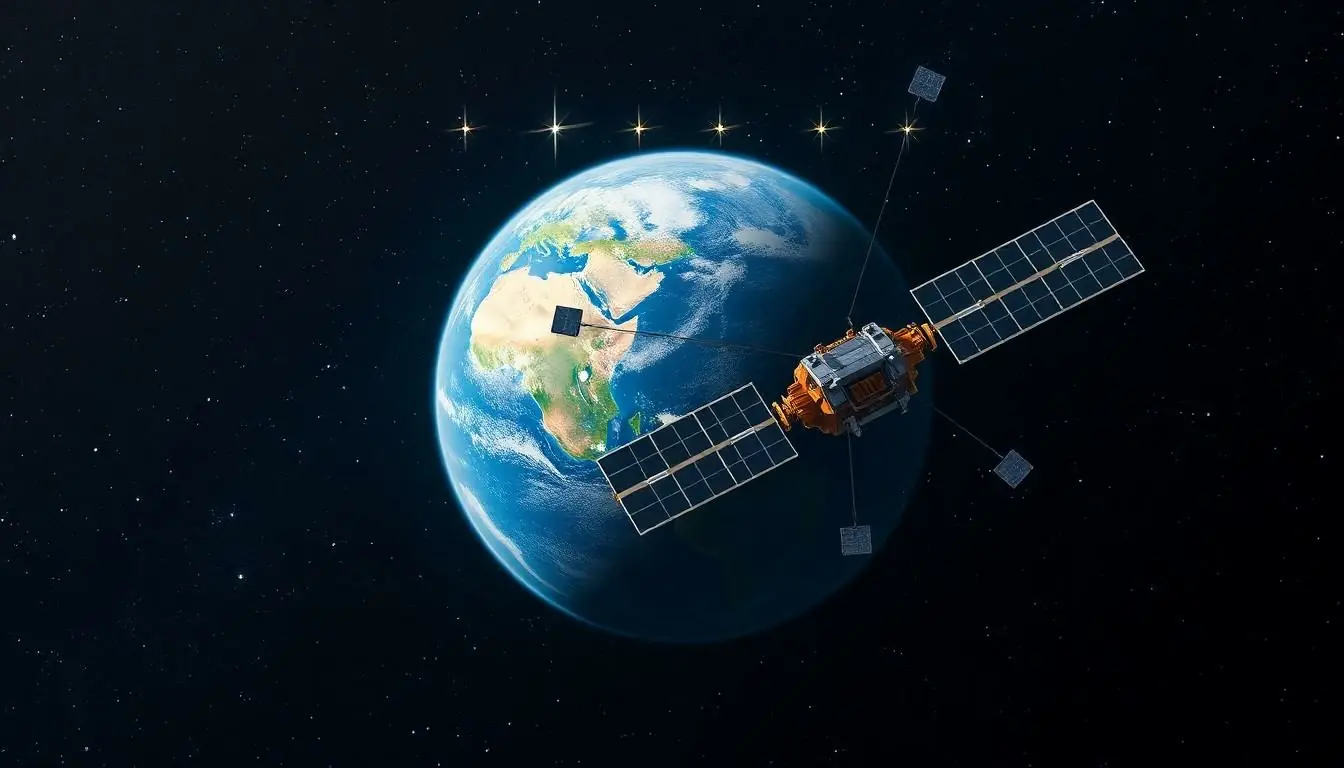Table of Contents
ToggleIn a world where smartphones feel outdated faster than a flip phone at a tech convention, space age technology is here to rescue us from the mundane. Imagine a future where your coffee brews itself while you float in zero gravity, or where your car takes you to work while you catch up on your favorite series. It sounds like something straight out of a sci-fi movie, but it’s closer than you think.
From satellites that provide instant weather updates to robots that can assist in surgery, the innovations of the space age are transforming everyday life. These advancements not only push the boundaries of what’s possible but also make life a little more exciting. Buckle up as we explore how these incredible technologies are shaping our world and why they might just be the best thing since sliced bread—or should we say, space bread?
Overview of Space Age Technology
Space age technology encompasses innovations developed during and after the Space Race, fundamentally altering industries and daily life. Innovations like satellites have reshaped communication by enabling global connections and precise navigation systems. Robotics, propelled by advancements in artificial intelligence, enhances surgical procedures, increasing accuracy and reducing recovery times.
Space exploration efforts have resulted in technologies such as GPS and weather forecasting tools. Satellites equipped with advanced sensors gather real-time data, leading to more informed decisions in agriculture, disaster management, and climate studies. Such applications illustrate the wide-reaching impact of space age technology.
Additionally, developments in materials science, such as lightweight composites and high-strength alloys, contribute to numerous sectors, including aerospace and automotive. These materials improve fuel efficiency and durability in various applications. They showcase how innovations derived from space exploration extend beyond their initial purposes.
Health care also benefits significantly from space age technologies. Telemedicine solutions, inspired by the need for remote communication, enhance patient care and access to specialists. Miniaturization techniques, initially developed for space missions, facilitate the creation of portable medical devices.
Energy production and storage have seen advancements thanks to research in space age technology. Solar panels, originally devised for spacecraft, have become ubiquitous in residential and commercial settings. Efficient energy storage solutions, prompted by the demands of space missions, support sustainable energy initiatives.
These examples underscore the transformative nature of space age technology. Cutting-edge advancements not only push boundaries but also create a more efficient, interconnected world. The ongoing evolution of these technologies promises further enhancements in daily life and industry.
Key Innovations in Space Age Technology

Space age technology has led to remarkable innovations impacting various sectors. These advancements shape everyday life while pushing the boundaries of human achievement.
Satellite Technology
Satellites play a crucial role in modern communication and navigation systems. Global Positioning System (GPS) technology relies on satellite signals to provide accurate positioning information. These devices enable mapping, tracking, and global communication by facilitating real-time data sharing. Weather satellites predict severe weather events, improving disaster response and emergency preparedness. Satellite imagery has revolutionized agriculture by allowing farmers to monitor crop health and optimize yields. This technology continues to enhance security and surveillance capabilities around the globe.
Spacecraft Design
Innovations in spacecraft design serve as a foundation for efficient space exploration. Engineers utilize lightweight materials and advanced aerodynamics to enhance vehicle performance. The use of reusable rocket technology, like SpaceX’s Falcon 9, significantly reduces costs associated with launches. Such advancements pave the way for deeper space exploration and potential colonization of other planets. Next-generation spacecraft integrate automated systems for navigation and operations, improving safety and reliability. These design principles also filter down, influencing commercial aviation and automotive industries.
Robotics and Automation
Robotics and automation technologies originate from space exploration initiatives. Surgical robots, inspired by advancements in robotic arms used in spacecraft, enhance precision in medical procedures. These innovations elevate patient outcomes through minimally invasive techniques. Automation technologies also impact industries like manufacturing and logistics, streamlining processes and increasing efficiency. Drones equipped with automated systems offer new applications in delivery services and surveying. As capabilities expand, these technologies promise improved safety and productivity across multiple sectors.
Impact on Everyday Life
Space age technology significantly influences daily experiences, enhancing convenience and efficiency in various aspects of life. These innovations shape how people communicate, receive medical care, and interact with their environment.
Communication Advancements
Satellites revolutionize communication systems worldwide. Mobile phones rely on satellite networks for clear connections, facilitating instant interactions regardless of location. Voice calls, video conferencing, and social media thrive on this technology, breaking down geographical barriers. The Global Positioning System (GPS) optimizes navigation and delivery services, ensuring timely arrivals. Enhanced connectivity leads to improved business operations and personal relationships alike.
Medical Technologies
Medical advancements benefit greatly from space age innovations. Surgical robots enhance precision during operations, resulting in quicker recovery times for patients. Telemedicine services allow remote consultations, expanding access to healthcare resources, especially in rural areas. Portable medical devices monitor vital signs, enabling real-time health tracking. These technologies merge expertise from space exploration with medical applications, fundamentally transforming patient care.
Future of Space Age Technology
Space age technology continues to evolve, promising to reshape various sectors even further. Innovations are emerging at a rapid pace, driven by both research and private sector investments.
Emerging Trends
Artificial intelligence now enhances space exploration, allowing for autonomous spacecraft that can analyze data in real-time. Advanced robotics play a crucial role in both spacecraft maintenance and surface exploration on other planets. 3D printing technology increasingly enables on-demand manufacturing of components in space environments, significantly reducing reliance on Earth supplies. Quantum computing, showing great promise in processing vast amounts of data, may revolutionize navigation and communication systems. Meanwhile, private companies are focusing more on space tourism, transforming accessibility to outer space. Furthermore, energy-efficient systems leverage renewable sources for sustainable space missions, setting the stage for greener exploration processes.
Potential Challenges
The rapid advancement of space age technology also brings its share of challenges. Space debris remains a significant concern, as the accumulation of defunct satellites and equipment threatens operational spacecraft. Additionally, regulatory frameworks often lag behind technological innovations, creating potential legal and safety issues in space operations. Cybersecurity risks increase as more systems become interconnected, exposing them to potential attacks. Cost management poses another challenge, especially for startups aiming to enter the competitive aerospace market. Finally, ensuring equitable access to these technologies may prove difficult, potentially widening the gap between developed and developing nations.
Space age technology is reshaping the landscape of modern life. Its influence stretches far beyond the realm of exploration and innovation. From enhancing healthcare to revolutionizing communication and transportation, these advancements are deeply woven into the fabric of everyday experiences.
As technology continues to evolve, the potential for further transformation remains immense. The integration of artificial intelligence and advanced robotics is poised to redefine industries and improve efficiencies. With ongoing investments and research, the future promises even greater breakthroughs that can enhance quality of life.
However, navigating the challenges that accompany these advancements will be crucial. Addressing issues like space debris and equitable access will ensure that the benefits of space age technology are shared by all. The journey ahead is filled with possibilities that can lead to a more connected and efficient world.





